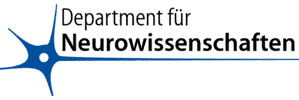Kontakt
Egelhaaf et al. 2003
Visually guided orientation in flies: case studies in
computational neuroethology
Egelhaaf M, Böddeker N, Kern R, Kretzberg J, Lindemann JP, Warzecha AK
JOURNAL OF COMPARATIVE PHYSIOLOGY A-NEUROETHOLOGY SENSORY NEURAL AND BEHAVIORAL PHYSIOLOGY 189 (6): 401-409 JUN 2003
To understand the functioning of nervous systems and, in particular, how they control behaviour we must bridge many levels of complexity from molecules, cells and synapses to perception behaviour. Although experimental analysis is a precondition for understanding by nervous systems, it is in no way sufficient. The understanding is aided at all levels of complexity by modelling. Modelling proved to be an inevitable tool to test the experimentally established hypotheses. In this review it will by exemplified by three case studies that the appropriate level of modelling needs to be adjusted to the particular computational problems that are to be solved. (1) Specific features of the highly virtuosic pursuit behaviour of male flies can be understood on the basis of a phenomenological model that relates the visual input to the motor output. (2) The processing of retinal image motion as is experienced by freely moving animals can be understood on the basis of a model consisting of algorithmic components and components which represent a simple equivalent circuit of nerve cells. (3) Behaviourally relevant features of the reliability of encoding of visual motion information can be understood by modelling the transformation of postsynaptic potentials into sequences of spike trains.



